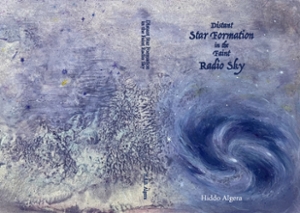Dissertation
Distant star formation in the faint radio sky
One of the key quests in astronomy is to study the growth and evolution of galaxies across cosmic time. Radio observations provide a powerful means of studying the formation of stars and subsequent buildup of distant galaxies, in a way that is unbiased by the presence of dust.
- Author
- Algera, H.S.B.
- Date
- 27 October 2021
- Links
- Thesis in Leiden Repository

One of the key quests in astronomy is to study the growth and evolution of galaxies across cosmic time. Radio observations provide a powerful means of studying the formation of stars and subsequent buildup of distant galaxies, in a way that is unbiased by the presence of dust. This thesis provides a detailed view of faint, star-forming galaxies in the early Universe through sensitive radio observations, and compiles several studies probing distant star formation with both radio synchrotron and free-free emission. In Chapter 2, we detect a large number of galaxies using sensitive new radio data from the Very Large Array, allowing us to separate radio emission from star formation and active galactic nuclei in the faint radio sky. In Chapter 3, we calibrate synchrotron emission as a tracer of star formation in distant starburst galaxies, while in Chapters 4 & 5 we turn towards radio free-free emission — a faint but very powerful tracer of star formation. Using sensitive new radio data at high frequencies, we perform the first detailed studies of free-free emission in distant galaxies.
